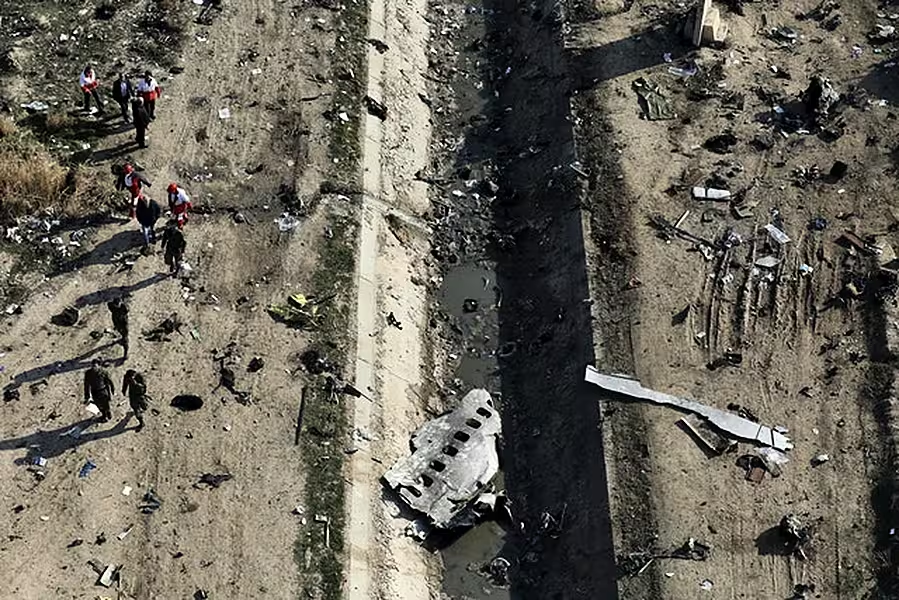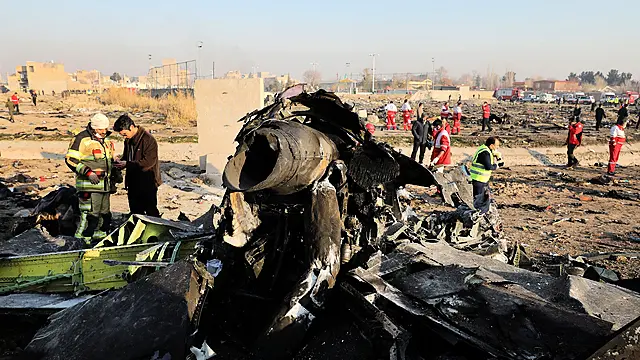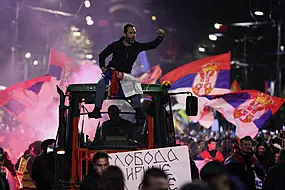A report on the website of Iran’s Civil Aviation Organisation described the official’s remarks as part of the final report that Tehran plans to issue on the shootdown of Ukraine International Airlines Flight 752.
Authorities had initially denied responsibility for the January 8 incident near Tehran, only changing course days later after western nations presented extensive evidence that Iran had shot down the plane.
The shootdown happened the same night Iran launched a ballistic missile attack targeting US soldiers in Iraq, its response to the American drone strike that killed Guard General Qassem Soleimani in Baghdad on January 3.

At the time, Iranian troops were bracing for a US counterstrike and appeared to have mistaken the plane for a missile.
Iran, however, has not acknowledged that, only saying that after the missile attack, its air defence was sufficiently alert and had allowed previously scheduled air traffic to resume — a reference to the Ukrainian plane being allowed to take off from Tehran amid such an unprecedented crisis.
The Ukrainian passenger plane was apparently targeted by two missiles.
The plane had just taken off from Tehran’s Imam Khomeini International Airport when the first missile exploded, possibly damaging its radio equipment.
The second missile likely directly struck the aircraft, as videos from that night show the plane exploding into a ball of fire before crashing into a playground and farmland on the outskirts of the Iranian capital.
For days after the crash, Iranian investigators combed the site, sifting through the debris of the plane.

Captain Touraj Dehghani Zangeneh, head of Iran’s Civil Aviation Organisation, said the Ukrainian passenger plane’s black boxes have only 19 seconds of conversation following the first explosion, though the second missile reached the plane 25 seconds later. The report quoting him did not elaborate.
He said the first missile explosion sent shrapnel into the plane, likely disrupting the plane’s recorders.
Representatives from the US, Ukraine, France, Canada, Britain and Sweden — countries whose citizens were killed in the crash — were present during the process to gather data from the recorders.
Last month, an initial report from the Iranian investigation said a misaligned missile battery, miscommunication between troops and their commanders and a decision to fire without authorisation all led to the fatal downing of the jetliner.
That report said the surface-to-air missile battery that targeted the Boeing 737-800 had been relocated and was not properly reoriented.
Those manning the missile battery could not communicate with their command centre, they misidentified the civilian flight as a threat and opened fire twice without getting approval from ranking officials, it said.
Western intelligence officials and analysts believe Iran shot down the aircraft with a Russian-made Tor system, known to Nato as the SA-15.
In 2007, Iran took the delivery of 29 Tor M1 units from Russia under a contract worth an estimated 700 million dollars. The system is mounted on a tracked vehicle and carries a radar and a pack of eight missiles.
The initial report did not say why the Guard moved the air defence system, though that area near the airport is believed to be home to both regular military and bases of the paramilitary force.
It also noted that the Ukrainian flight had done nothing out of the ordinary up until the missile launch, with its transponder and other data being broadcast.
The aircraft’s black boxes were brought to Paris in July, to France’s BEA accident investigation agency, where they are being examined.
“Data recovery activity was all done with the aim of safety and preventing similar incidents,” Mr Zangeneh said, adding an appeal against “any political use of the process”.
Later in the day, Iranian state TV quoted Mr Zaganeh as saying the data showed the Ukrainian plane was on the right flight path.
After 19 seconds of the first explosion, the communication system of the black boxes was cut, he said.
Planes carry two different flight recorder devices, called black boxes — the flight data recorder and the cockpit voice recorder.
“All three crew in the cockpit were controlling the flight until the very last,” Mr Zangeneh said.
He added that Iran’s airspace is now “safe and ready” for international flights.







